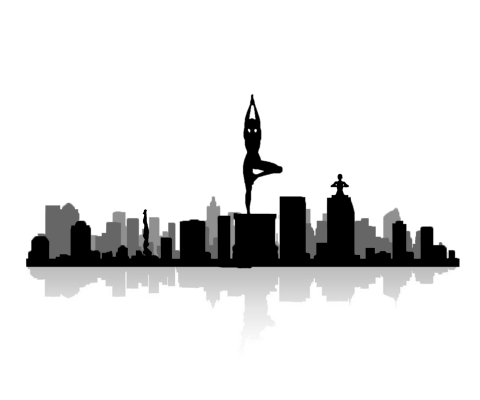Catching your Breath in the City that Never Sleeps
Students can use breathing exercises to beat the stresses of midterms. (GRAPHIC BY MAURER/THE OBSERVER)
February 14, 2016
New York City is a wonderful study partner—it always seems so much easier to stay up until the wee hours of morning finishing a term paper when the rest of the city is staying up with you. But while its ceaseless energy makes for a wonderful companion during midterms, that very same energy can drain you mentally and physically. During a time already fraught with stress and anxiety, New York City college students are faced with a challenge that is entirely their own: how do we disconnect and recharge in an environment that constantly demands our attention?
Fitting even the smallest workout or sliver of alone time can seem impossible when faced with the demands of school, work and the city. Because of its lack of prerequisites and equipment, yoga can be the perfect five minute workout on days when you barely have time to grab a sandwich for lunch. Yoga also serves as a healthy coping mechanism for stressed people who are tight on time. By taking what you learn on your mat into the classroom and the street, your anxiety and stress levels can become much more easily managed.
If you’re not the type to come into ragdoll pose on the subway, bringing your yoga practice into your everyday schedule may seem crazy. Luckily, there is a far more subtle side to the practice of yoga. Pranayama, also known as yogic breath, is the control of breath through a variety of techniques. When used in tandem with poses, pranayama can enhance or create ease in your practice.
Becoming aware of your breath and how your body moves with it can automatically calm your immune system, ultimately reducing feelings of anxiety. There are several pranayama practices that promote better sleep and reduced stress. Because these breathing exercises are best done while sitting upright or lying down they can fit seamlessly into your schedule, whether it be at your desk or as a part of your bedtime ritual.
The Long Exhale: One pranayama practice in particular proves to be invaluable for college students struggling to keep some semblance of a sleep schedule. The Long Exhale exercise is an accessible practice that can be done from the comfort of your bed. Start by taking a few moments to familiarize yourself with your natural breathing pattern. Inhaling and exhaling through your nostrils, allow your breath to fill your belly rather than your chest, feeling it rise and fall with your inhalations and exhalations. After a few minutes of steady breathing, begin to count how many seconds your inhales and exhales last. Slowly start to elongate your breath, drawing out your exhales a count or two longer than your inhales. As you spend more time aware of your breath pattern, fall into a ratio that is most comfortable for your body.
Abdominal Breathing: Are you feeling anxious about a big presentation at your internship or for your midterm exam? The Abdominal Breathing exercise, also known as diaphragmatic breathing, is the perfect outlet for pent up nervousness. Start with one hand placed on your belly and the other on your chest, breathing through your nose. After a few breaths, start to focus on the rise and fall of your belly and chest as you inhale. As you inhale, try to expand your belly before you expand your chest. As you exhale, collapse your stomach before you let your chest fall. Begin to elongate your inhales and exhales until you’re taking an average of 6-8 breaths per minute.
Yoga does not have to mean sweatpants and a rubber mat—it can be as simple as taking a few minutes for yourself over a lunch break. By focusing on how your body expands and contracts with your breath can help you gain a stronger understanding of what you need to feel your best. And at a time when mental and physical health oftentimes come in second or third place to school and the city that we study in, paying attention to what your body is telling you is crucial to leading a well-rounded life.









